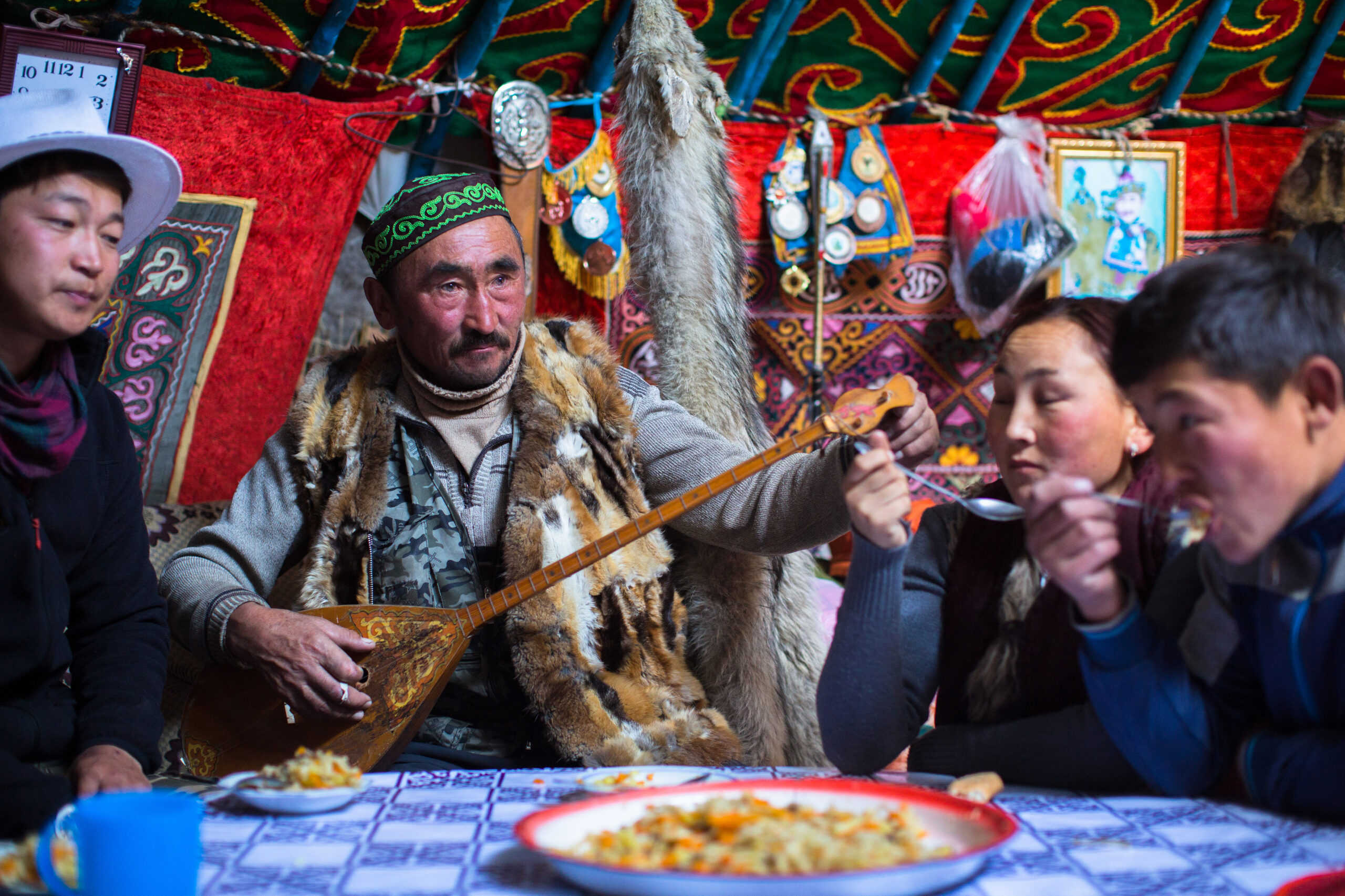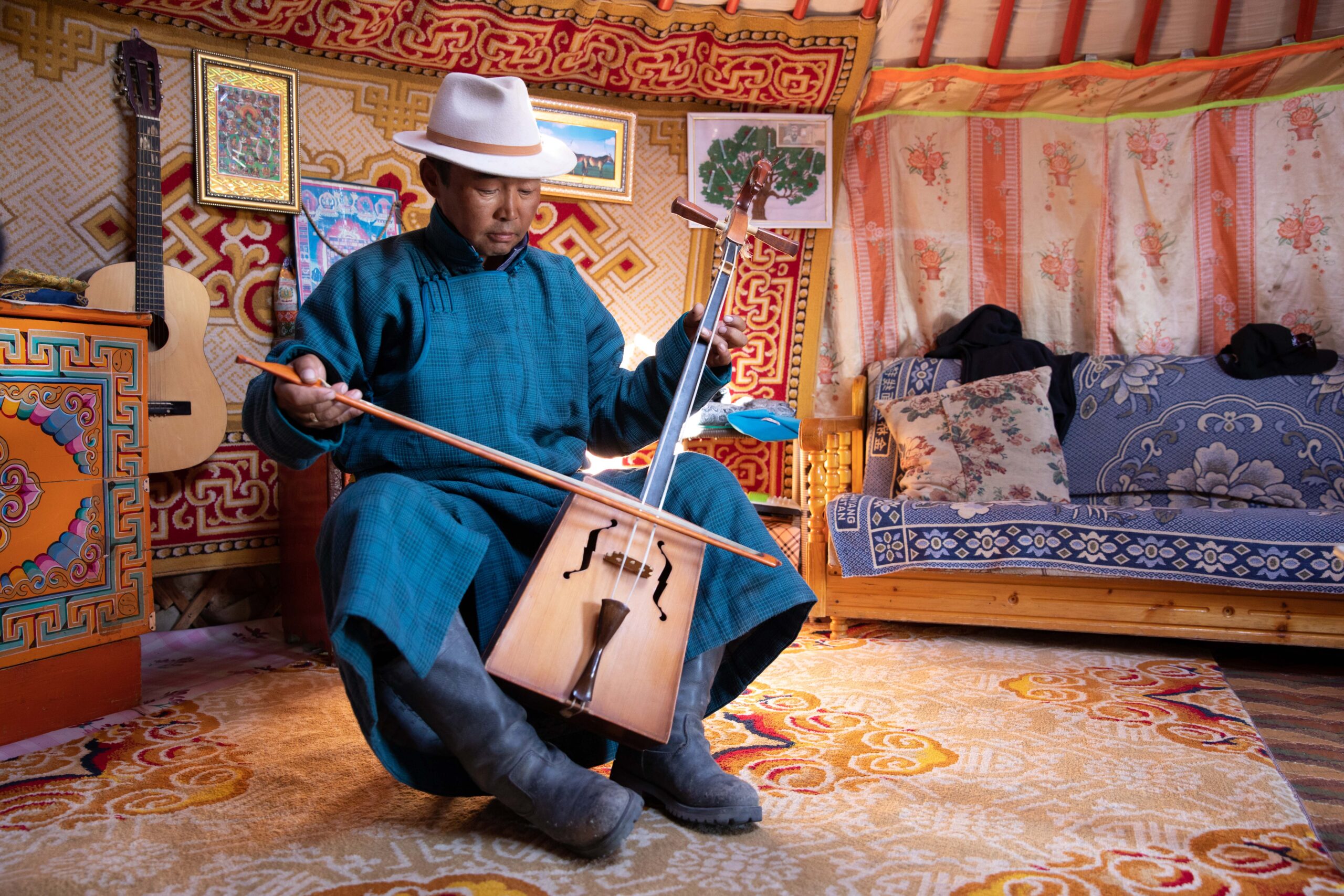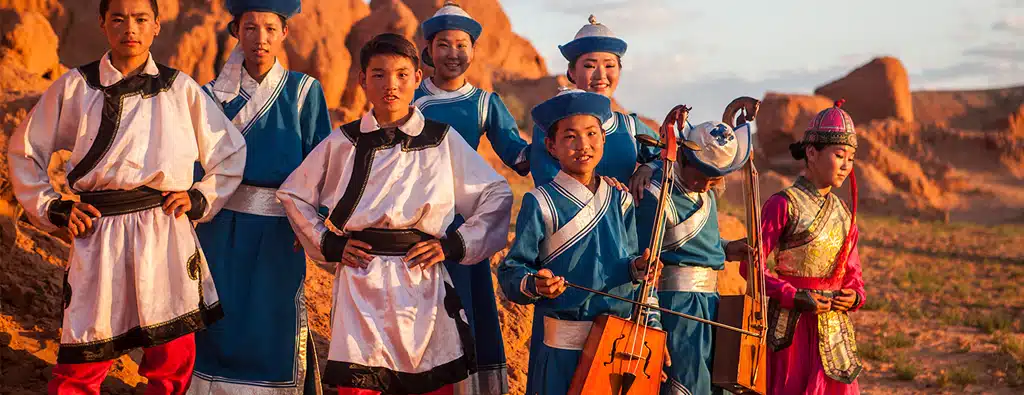The Traditional Instruments of the Mongols
When you travel to Mongolia, you’ll discover a rich musical culture that reflects the country’s customs and traditions. Traditional instruments of Mongolia are divided into categories like strings, wind, struck, bowed, and percussion. These are classified as either indigenous or adopted and modified from neighboring ethnic groups or conquered countries.
Mongolians made traditional musical instruments using various materials like stone, wood, clay, iron, copper, bone, animal skins, and hair. The instruments are unique in that they reflect the culture and customs of the Mongolian people.


Morin Khuur or Horse Headed Fiddle
Perhaps the most iconic Mongolian instrument is the Morin Khuur or Horse Headed fiddle. This two-stringed instrument has thick and thin strings made of 365 horse tail hairs, symbolizing the number of days in a year. According to legend, the Morin Khuur originated from the relationship between man and horse. Mongolians have used the Morin Khuur during state ceremonies and festivities since the reign of Genghis Khan. It has been the main instrument in Mongolian song and dance festivals since its inception. In 2003, it was registered at UNESCO as a masterpiece of oral and intangible heritage.
Tsuur
The “tsuur” is a pipe-shaped wooden wind instrument with three holes that creates 12 different sounds. It’s unique because it produces two sounds simultaneously through a combination of human vocal activity and the instrument. The tsuur is made using black wood or white willow and was declared a UNESCO World Heritage Site in Need of Urgent Safeguarding in 2009.
The Altai Harp
The Altai harp is a five-stringed wooden instrument that dates back to the 7th century or the ancient Turkic period. It was first discovered during archaeological excavations in Mankhan soum, Khovd province, Mongolia, in 2008. The resonating sound it produces is ideal for singing Mongolian epics and praise songs and is especially suitable for Altai epic songs and throat singing. The original Altai Yatga is kept at the National Museum of Mongolia in Ulaanbaatar.
Yatga or Plucked Zither
The zither is another type of ancient Mongolian plucked, stringed instrument that was used as early as the 13th century. It has a long straight shape and is made of dried wood that has been aged for a year. The zither is popular in the central, western, and eastern provinces of Mongolia and is played with the fingers rather than artificial claws.
The khuuchir is a traditional four-stringed instrument that originated with nomads north of the Yellow River. It’s one of the great five traditional musical instruments of Mongolia and is played with a bow. This instrument has flourished since the 1940s and is used as a solo instrument.
Khuuchir
The khuuchir is a traditional four-stringed instrument that is played with a bow and it is believed to have originated with nomads who lived north of the Yellow River. This instrument is one of the great five traditional musical instruments of Mongolia, and the current style has flourished since the 1940s. This instrument is used as a solo instrument as well as in small ensembles and large orchestras and plays the main melody of the orchestra.
Limbe or Flute
The Limbe is an ancient side-blown flute instrument that is known in more than 100 countries around the world. Mongolian flute performers have a special technique for performing folk long songs by a flute. This is called circular breathing which is a technique of simultaneously blowing without interruption using air stored in their cheeks. This technique used by craftsmen when they make their artwork. Circular breathing was inscribed in 2011 on UNESCO’s List of Intangible Cultural Heritage in Need of Urgent Safeguarding.
Yochin or Hammered Dulcimer
One of the traditional instrument that included in the Grand State Orchestra founded by Khubilai Khan in the 13th century. Yochin is made of hardwood, and the sting has 18 rows, each has 3-4 strings. Generally, it’s trapezoidal-shaped, has two bamboo sticks and a four-legged base. The instrument is ideal for playing fast-paced melodies and has no muffler, so it has a lot of echoes and makes a very unique sound. It can perform rock, pop, and even jazz music. Also can played by hands.
Shudraga or Shanz
Shudarga is a plucked three-string instrument, widespread across Asia. In Japan known as Shamisen, and in China as Sanxian. The word shudarga was originally named for its long-handled ladle was called shudarga by the Mongols. The instrument plays an important role in modern folk ensembles and orchestras. The music is a perfect match for rock and pop music because it produces a good rhythm. Suitable for folk song, pop, rock song and It’s the only one instrument that can perform all types of Western traditional dance ‘Bii Biyelgee’.
Ever Buree or Horn-Trumpet
The ever buree is a Mongolian musical instrument, part of the clarinet family. Originally invented by S. Gooshchii, a musician of the Mongolian State Opera and Ballet Theatre, it was made of a yellow ox horn. Other types of Horn-trumpet are used in other countries and it’s made from goat horns and horns of other animals. In a folk orchestra, the horn trumpet plays the main and auxiliary melodies.
Lamb’s Ear or Khurgan Chih
The Lamb’s Ear is one of the most ancient Mongolian musical instruments for young children, made of clay to depict the shape of an animal’s head. Mongolians believe the melody of this instrument will worship nature and play this instrument as it symbolizes winter without dzud, and summer without drought in summer. The playing of this wind instrument is now one of the endangered tangible cultural heritages. Professional musicians and researchers are studying and recording the techniques of playing it.
Jaw Harp
The jaw harp is a musical instrument that has attracted the attention of music lovers with its simple yet unique and elegant melody and is now distributed in more than 160 countries. Although it has a history of thousands of years and has not lost its original form, the origin of this musical instrument has not been officially determined, but it is considered to be one of the traditional Mongolian musical instruments as it has been used in Mongolian ceremonies for at least 2,000 years.
Dombra
Kazakhs living in the western part of Mongolia use this string musical instrument. It is a popular instrument among Turkic communities in Central Asian countries such as Kazakhstan, Uzbekistan, Turkmenistan, Afghanistan, Mongolia. From the sound of dombra music, you can feel the snow-capped mountains, rivers, the chirping of birds, the crowds, the joys and sorrows of the Kazakh people. Every family has a dombra, and all family members have learned to play the dombra to a certain extent, which is a great pride of the Kazakh national culture.
Mongolian traditional musical instruments have a unique sound that distinguishes them from other instruments. By incorporating traditional instruments into your travels, you can immerse yourself in Mongolia’s rich cultural heritage and appreciate the country’s customs and traditions.
Explore our Mongolia Journeys
Contact us to create a custom Mongolia journey tailored to your exact interests.

